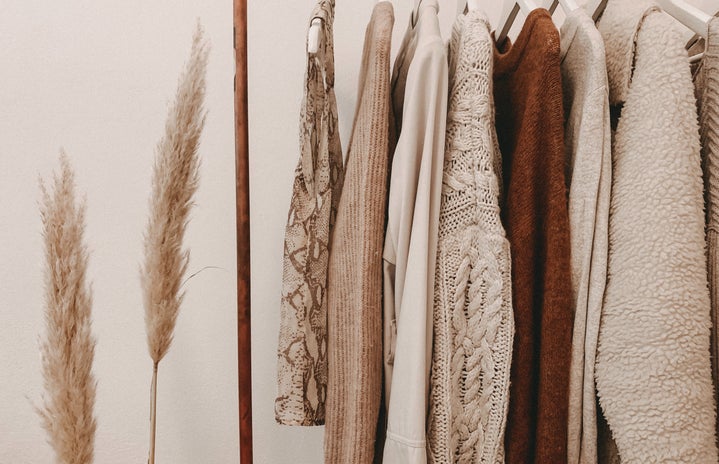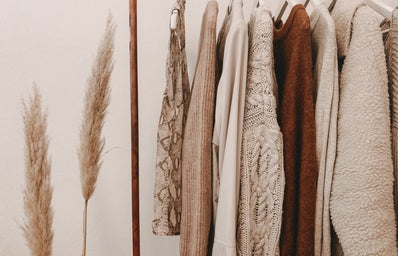Many of us have heard about the horrors of fast fashion: the piles of clothes that end up in landfills after only a single use, the trillions of gallons of water wasted on the mass-dyeing of fabric, and the thousands of exploited workers across the world.
And yet, when we see that cute crop top at Urban Outfitters or the cheap pair of pants at Forever 21, we often feel like we can’t help ourselves. “It’s SO cheap!” we remark gleefully to our friends — as if price alone is justification for the unjust system it was created in.
The heartbreaking reality is that many of us keep perpetuating this toxic system of fast fashion culture. When we do so, we risk the health of the planet, workers, animals, and our own well-being. Not only that, but so many of us still continue to be unsatisfied shortly after a new fast fashion purchase. The novelty is quick to wear off — our new cheaply made clothes are fast to fall apart, and, let’s face it, when everyone else owns the same thing, we grow bored with our “fashion” quicker than we can keep up with.
The result?
More clothes. More purchases. More waste.
Less novelty. Less individuality. Less satisfaction.
So, how do we combat this crisis?
Here is a beginner’s guide to more sustainable (and cute!) fashion!
- Start working with what you have.
-
Chances are you probably already have numerous cute clothes to work with in your closet at this very moment. Take an afternoon and try some of those clothes on to envision new, creative ways of pairing certain pieces together and get yourself excited about what you already have!
- Do your research.
-
There are numerous apps and websites that can do a good deal of this work for you. I highly recommend the app “Good on You,” which has a deeply developed database on the reputability and sustainability of many different clothing companies. It takes only 30 seconds to look up a brand and see its rating on apps such as these. This will help make you a more informed buyer, and will make you think twice when you feel that impulse to buy a cheap, fast fashion item.
- Invest in sustainably made pieces.
-
A lot of sustainably made items are more expensive. This just naturally is the result of companies who use high-quality materials, pay workers humane wages, and attempt to minimize their carbon footprint. It might feel scary to pay $40 for a top instead of $5, but the upfront investment will always pay off in the long run. Having a few high-quality items that can be dressed up in different ways and worn repeatedly for years is much more ideal than having dozens of cheaply made items that will only be worn once or twice.
- Buy second hand.
-
For individuals where buying from more expensive, sustainable companies might not be possible, thrift stores are an excellent alternative. While trying to stay on a strict budget in college, second hand shopping is my personal go-to. To this day, I have found some of my favorite, most beautiful pieces of clothing at thrift stores. What better way to help combat the amount of clothes that end up in the landfill each year than by purchasing clothes someone else has decided to give away? Also, if in-person thrifting does not feel safe for you during the pandemic, check out online platforms such as Depop or Poshmark!
- For every article of clothing you invest in, try to donate, sell, or repurpose an old one.
-
A common mistake of people who are new to sustainable fashion practices is that many think that to start being sustainable, they must first throw away all the “unsustainable” clothes in their closet. This is not the solution, but is, in fact, contributing to the problem! Unless you really do not envision yourself wearing anything you currently own and you plan to donate your clothing, the best idea is to work with what you have. From there, a good rule of thumb is for every new item you buy, try and donate, sell, or repurpose an old item. You will surprise yourself with the old items you may discover.
- Organize clothing swaps.
-
If you feel uneasy about the idea of purchasing clothes that used to be owned by a stranger, then this is the perfect solution for you! Organize a clothing swap with a couple of friends where you all bring articles of clothing that you no longer need or wear. You can make this such a fun event with a brunch, coffee, or delicious dinner! The best part: you will find many new treasures, and you won’t even have to touch your wallet:)
- Learn to create components of your wardrobe yourself.
-
Without a doubt, one of the MOST sustainable ways to engage with fashion is to make garments and accessories for yourself. Not only will this help the environment, but it will also encourage your creativity and individual expression when it comes to your closet! How cool is it to own an article of clothing not a single other person owns because you made it yourself? To be able to have complete creative freedom over what you put on your body is incredible. Try learning to sew, crochet, or embroider in your free time! You can start making your own pieces from old fabrics, thrifted clothes, or anything else your heart desires.
- Prioritize how you accessorize.
-
The most fashionable people I know are the best at accessorizing. In fact, most of the people I perceive as highly fashionable actually have modest closets but are extremely creative with how they wear what they own. A “boring” outfit can be dressed up in minutes with the right accessories. So, if you have a shirt that feels out of fashion or pants that feel dull, throw on some funky, bright colored earrings, tie ribbons in your hair, or add a pop of color with the right pair of shoes or hat. Investing in the right accessories will help reduce the feeling of wanting to always be buying more articles of clothing and will keep you looking interesting, exciting, and beautiful.
I hope these tips are useful to anyone hoping to start the transition away from fast fashion and towards sustainability. Remember, being sustainable does not have to mean paying unreasonable amounts of money on clothes, wearing boring colors, or missing out on current trends. Sustainability is fulfilling, inspiring, and energizing. You can start prioritizing what feels good on your body, free from the confines of what is currently “in style,” and create novel ways of self-expression — all while helping protect this beautiful planet we call home.
Want to keep up with HCBU? Make sure to like us on Facebook, follow us on Instagram, check out our Pinterest board, and read our latest Tweets!



